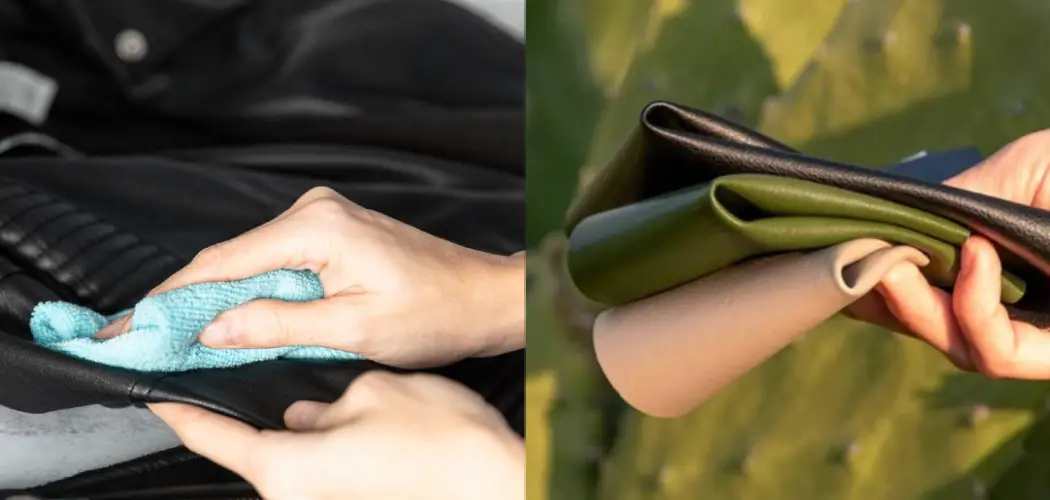As veganism becomes more popular, so does vegan leather. Many people are interested in switching to this material but don’t know how to care for it. Here’s a guide on how to take care of vegan leather belongings and make them last longer!
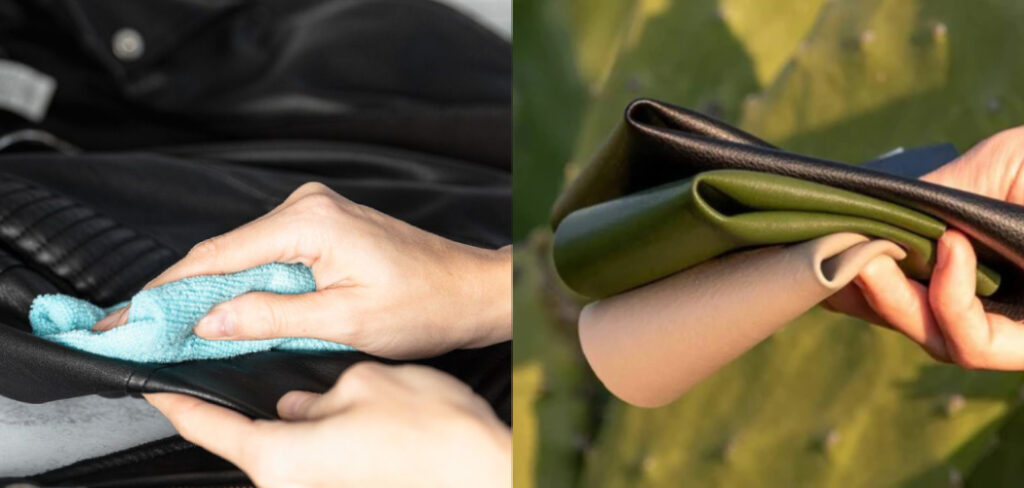
What Is Vegan Leather?
Vegan leather is a term used to describe a material that resembles leather but is not made from animal skin. There are a variety of vegan leathers on the market, each with its own unique properties. For example, some vegan leathers are made from plant-based materials such as cork or pineapple leaves, while others are made from recycled plastic bottles or synthetic fibers.
While vegan leather does not have the same durability as traditional leather, it is often more environmentally friendly. Therefore, it may be suitable for those who are looking for a cruelty-free alternative. In addition, vegan leather can come in a wide range of colors and finishes, making it a versatile material for various applications.
Ultimately, vegan leather is a good choice for those who want the look of leather without using animal products.
Why It’s Important to Take Care of Vegan Leather?
As the demand for vegan leather products increases, it’s important to know how to take care of them properly. Because vegan leather is made from synthetic materials, it is important to avoid using harsh chemicals or cleaners that could damage the material.
In addition, always test a new cleaner or product on a small area of the leather first to make sure it won’t cause any damage. Finally, when storing vegan leather items, be sure to keep them away from direct sunlight or heat sources, as this can cause the materials to break down over time.
With proper care and storage, your vegan leather products should last for many years to come.
8 Tips to Follow on How to Take Care of Vegan Leather
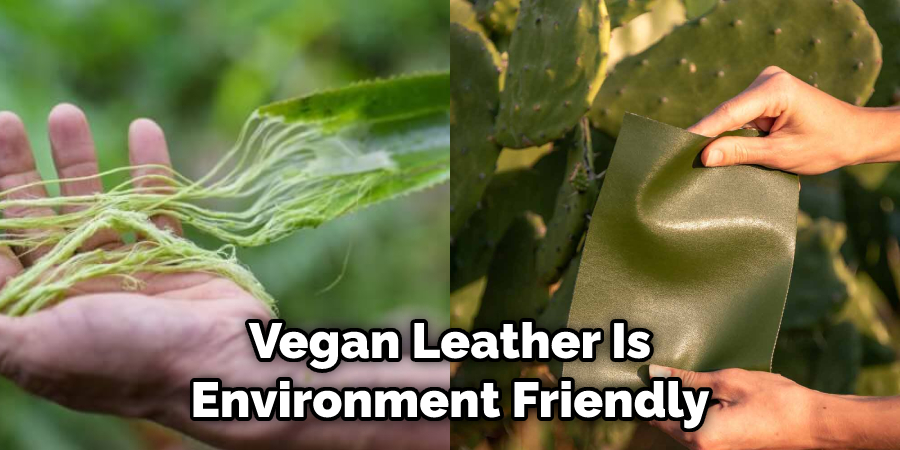
Vegan leather is a fantastic alternative to traditional leather made from animals. It is often more durable and environmentally friendly than its animal counterpart, but it does require special care to keep it looking its best. Here are some tips on how to take care of your vegan leather products:
1. Avoid Heat or Direct Sunlight
Heat can cause vegan leather to warp and fade. Direct sunlight will also cause fading over time. If you must store your vegan leather products in a warm or sunny place, consider covering them with a cloth or placing them in a box out of direct sunlight.
2. Keep it Clean
Just like traditional leather, you should regularly wipe down your vegan leather goods with a damp cloth to remove dirt and grime. You can also use a gentle, mild soap if needed. Avoid harsh chemicals and detergents, as they can damage the material.
3. Protect it from the Elements
Just like regular leather, vegan leather can suffer from exposure to the elements. The sun can cause fading and cracking, while rain and snow can make it brittle and susceptible to mold and mildew. To keep your vegan leather looking its best, store it in a cool, dry place when you’re not using it. If you must keep it outside, make sure it’s covered and protected from the elements.
4. Don’t Overstuff it
When storing vegan leather items, don’t overstuff them. This can cause the fabric to stretch out of shape and look wrinkled. Instead, store them loosely in a cool, dry place.
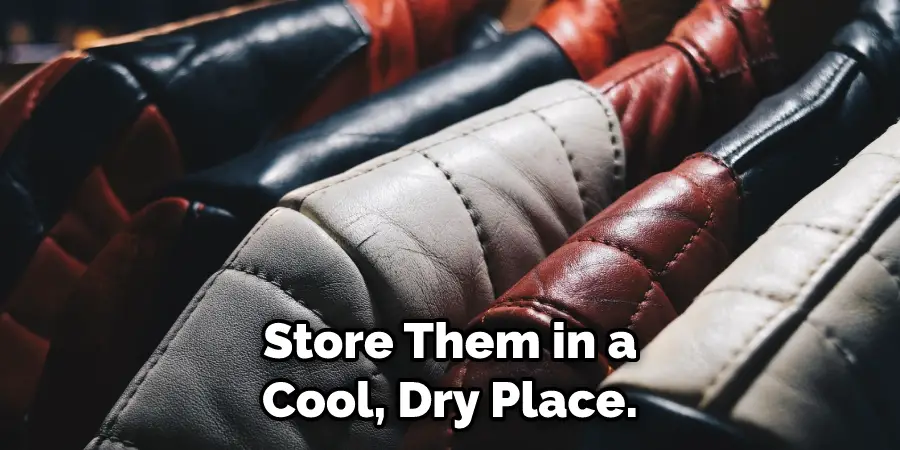
5. Use a Protective Spray
In order to help keep your vegan leather products looking new, it’s a good idea to use a protective spray. These can be found at most stores that sell leather products. Simply spray the entire piece with an even coat and let it dry completely before using it. Be sure to follow the instructions on the label of whichever product you choose.
6. Don’t Forget to Moisturize
Regularly moisturizing your vegan leather will help to keep it supple and prevent cracking. You can use a store-bought leather conditioner or make your own by mixing one part olive oil with two parts vinegar. Apply the mixture to a clean, soft cloth and rub it into the leather in a circular motion. Be sure to let the conditioner soak in for at least 15 minutes before wiping it off. You can also use this mixture to clean your vegan leather goods regularly.
7. Be Careful with Sharp Objects
Vegan leather is durable but can be scratched or punctured by sharp objects. Be careful when handling knives, keys, or other sharp objects around your vegan leather goods. If you do accidentally scratch or puncture the material, you can try to repair it with a leather patch kit or by using super glue.
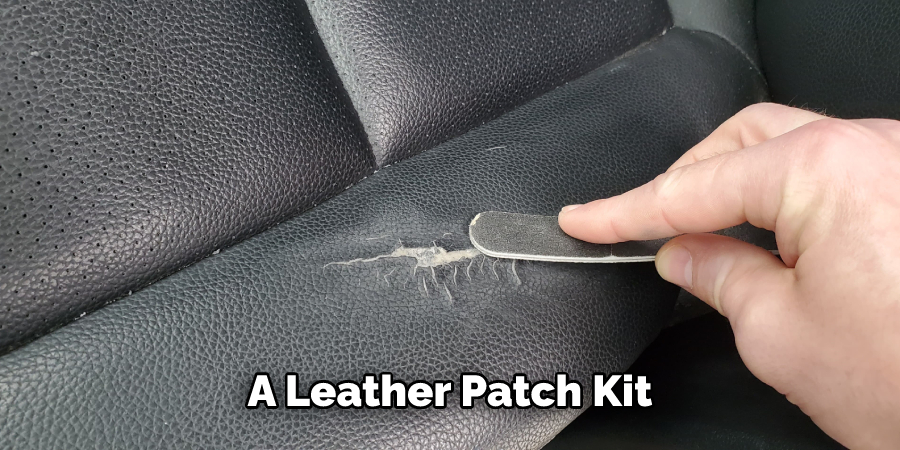
8. Be Careful with Storage
Proper storage is key to keeping your vegan leather looking its best. Avoid storing it in areas that are prone to moisture or heat, as this can cause the material to warp or fade. If you must store your vegan leather in a warm or sunny place, consider covering it with a cloth or placing it in a box out of direct sunlight.
When storing vegan leather items, don’t overstuff them. This can cause the fabric to stretch out of shape and look wrinkled. Instead, store them loosely in a cool, dry place.
That’s it! You’ve now learned how to take care of vegan leather. With a little bit of effort, you can keep them looking like new for years to come.
How to Condition Vegan Leather
Vegan leather is a great alternative to traditional leather, but it requires special care to keep it looking its best. Here are a few tips for conditioning vegan leather:
- Choose a conditioner specially formulated for vegan leather. These products will help to replenish the natural oils that help to keep the material supple.
- Apply the conditioner evenly over the surface of the vegan leather. Be sure to work it into any creases or wrinkles.
- Allow the conditioner to soak in for 10-15 minutes before wiping away any excess with a soft cloth.
- Repeat this process every few months, or as needed, to keep your vegan leather looking its best.
How to Protect Vegan Leather From Fading and Staining
Vegan leather is a great alternative to traditional leather but can be tricky to care for. Here are some tips to help you keep your vegan leather looking its best:
- Avoid exposure to direct sunlight or bright artificial light, as this can cause fading. Instead, cover it with a sheet or towel if you must store vegan leather in a sunny spot.
- Be careful not to get water on vegan leather, as this can cause staining. If your vegan leather gets wet, blot it dry with a clean cloth as soon as possible.
- Avoid contact with oils and grease, as these can cause permanent damage. If you must handle oily or greasy items, wear gloves or put a barrier between the vegan leather and the item.
By following these simple tips, you can help protect your vegan leather from fading and staining. Keep reading for more information about how to take care of vegan leather.
What to Do if Your Vegan Leather Starts to Wear Down
So, you’ve decided to go vegan. Congratulations! This choice aligns with your values and helps you to live a more sustainable and eco-friendly lifestyle. However, as you may have discovered, vegan leather is not always as durable as traditional leather. Over time, it can start to show wear and tear, making your once-pristine handbag look shabby and worn.
But don’t despair! You can do several things to extend the life of your vegan leather goods. First, try using a vegan leather conditioner. This will help to keep the material supple and prevent it from drying out and cracking. Second, avoid exposing your vegan leather to direct sunlight or excessive heat, as this can cause it to fade or warp.

Finally, be sure to store your vegan leather items in a cool, dry place when you’re not using them. With a little care, your vegan leather goods will last for years to come.
The Benefits of Using Vegan Leather Over Traditional Leather
As the world becomes increasingly mindful of our actions impact on the environment, more and more people are looking for ways to live a more sustainable lifestyle. This is particularly evident in the fashion industry, as consumers are becoming more choosy about the materials used to make their clothes and accessories.
Leather, for example, is a popular material for many items, but it also has a large environmental footprint. The good news is that there is a growing market for vegan leather, which is a sustainable and cruelty-free alternative to traditional leather.
Vegan leather is typically made from plant-based materials such as polyurethane or PVC. These materials are much less harmful to the environment than the chemicals used in conventional leather tanning. In addition, vegan leather does not require the slaughter of animals, making it a more humane option.
What’s more, vegan leather can be just as durable and stylish as traditional leather, making it a great choice for those who want to reduce their impact on the planet without compromising on quality or style.
Frequently Asked Questions
Is Vegan Leather a Good Quality?
Vegan leather is a good quality, but it may not be the best option for everyone. The main reason that vegan leather may not be the best option for everyone is that it is not as durable as leather made from animals. Additionally, vegan leather may not be as resistant to water damage as leather made from animals.
What Are the Disadvantages of Vegan Leather?
Vegan leather is made from animal-free materials, such as plant-based cowhide or recycled plastic. It may be a more environmentally-friendly option than traditional leather, as it does not require the use of animals to produce.
There are a few potential disadvantages of vegan leather. First, it may be more expensive than traditional leather. Second, it may not be as durable or resistant to wear and tear. Third, it may not be as aesthetically pleasing as traditional leather. Fourth, it may not conform as well to the shape of the object being made with it. Fifth, it may require special care and maintenance to keep it looking and feeling good. Sixth, it may not be waterproof or resistant to moisture. Seventh, it may contain traces of animal ingredients that some people find offensive or harmful. Eighth, it may not be comfortable to wear because of its texture or feel. Ninth, it may not be compatible with certain types of clothing or accessories. Tenth, it may not be sustainable in the long term because of the resources required to produce and sustain it.
Can Vegan Leather Get Wet?
Vegan leather is made from a variety of materials, including natural and synthetic materials. Generally, vegan leather is water resistant, meaning that it can withstand light rain or sprinkling without becoming wet. However, synthetic materials may not be as water resistant as natural materials, so it is important to inspect the seams and other areas where water could potentially enter to make sure that the leather is waterproof. In general, vegan leather is considered water resistant enough for most casual uses.
Does Vegan Leather Crack and Peel?
Vegan leather does not crack or peel like leather that is made from animal skin. The main difference between vegan and traditional leather is the way the animals were treated – with vegan leather, the animals were not killed, their skins were not removed, and they were not treated with any chemicals. This makes vegan leather a more environmentally friendly option, as it uses less resources and generates less waste than traditional leather.
Conclusion
So, there you have it! Everything you need to know about taking care of vegan leather. Follow these simple tips, and your vegan leather products will last you for years. Thanks for reading our post about how to take care of vegan leather. Have any other questions? Leave us a comment below, and we’ll be happy to help. Thanks for reading!

